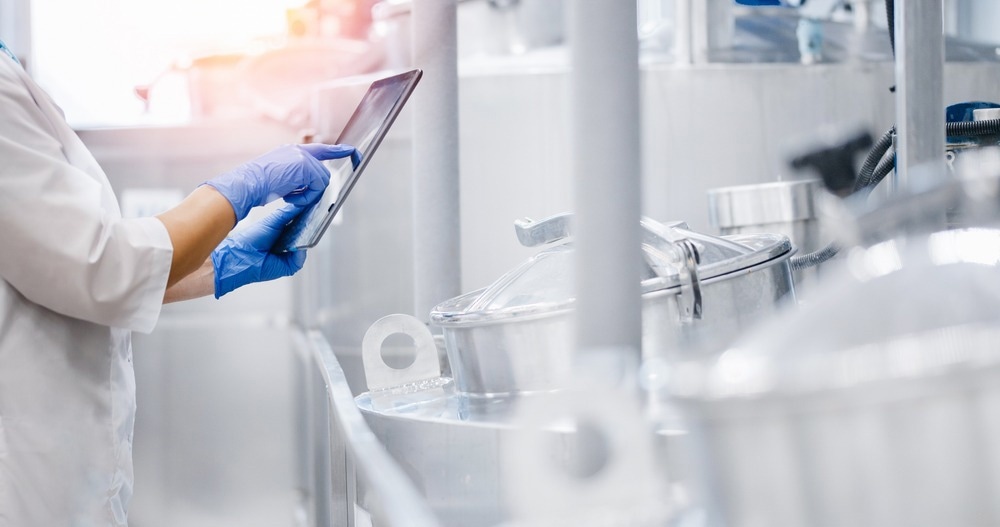Aromas are integral to the overall sensory experience of consuming food and beverages, contributing to our perception of flavor and influencing our taste preferences and judgments about product quality. The human sense of smell is incredibly complex, capable of distinguishing thousands of different odors. Sensory analysis, therefore, plays a crucial role in unraveling the intricate relationship between aromas and our sensory perceptions.
Recent developments in sensory analysis have been driven by a desire to enhance the precision and reliability of olfactory assessments. Researchers and industry professionals are increasingly turning to advanced technologies to dissect and understand the nuances of aromas. Olfactometers, in particular, have become indispensable tools in this pursuit.
Precision Olfactometry
One of the significant advancements in olfactometry is the improvement of precision in odor measurement. Precision olfactometers are equipped with highly sensitive sensors and advanced analytical techniques, allowing for the accurate quantification of even trace amounts of aromatic compounds. This level of precision is essential for differentiating between subtle aroma variations and ensuring the reliability of sensory assessments.
Artificial Intelligence Integration
The integration of artificial intelligence (AI) has elevated the capabilities of olfactometers. Machine learning algorithms can be trained to recognize complex patterns in aroma profiles, enabling olfactometers to provide more detailed and nuanced analyses that improve the accuracy of sensory assessments and expedite the analysis process, making it more efficient for researchers and industry professionals.
Aromatic Profile of Japanese Wagyu Beef
In a recent 2021 study exploring the distinctive aroma of Japanese Wagyu beef, researchers utilized advanced sensory analysis techniques. Gas chromatography–olfactometry (GC-O) was employed, combining gas chromatography with sensory detection to identify odorants responsible for the unique Wagyu beef aroma. Sixty-three odor-active compounds were detected, and 39 were identified through GC-O analysis. Eight key compounds, including γ-hexalactone and γ-decalactone, were quantified using stable isotope dilution assay.
Sensory evaluations revealed that Wagyu Type B exhibited a superior sweet and oily aroma compared to Holstein and Wagyu Type A. The study also investigated the correlation between odorants and metabolites, identifying critical compounds such as glutamine and decanoic acid. The findings contribute to understanding the factors influencing the premium quality of Wagyu beef aroma, with γ-hexalactone proposed as a marker.
Novel Portable Olfactory Device
In another 2018 study, researchers explored using a novel portable olfactory device for ortho-nasal administration of smells in the context of sensory analysis of food and beverages. The study aimed to determine whether odors delivered through this device could influence participants' taste perception. After confirming participants' ability to perceive odors using the device, they were asked to taste different foods and beverages with or without concurrent olfactory stimuli (chocolate or citrus smells).
Results demonstrated that the olfactory device effectively controlled odor delivery and significantly influenced participants' evaluations of the taste dimensions, indicating the potential for multisensory interactions in food and beverage perception.
The study introduces a promising, easily manageable olfactory interface for laboratory experiments, addressing the limitations of existing olfactometers in size, complexity, and transportability. Future applications may include virtual reality simulations and investigations into olfactory contributions to presence and memory.

Image Credit: Parilov/Shutterstock.com
Applications in the Food and Beverage Industry
The applications of olfactometers in the food and beverage industry are diverse, ranging from quality control to product development.
Quality Control and Novel Products Development
Olfactometers are instrumental in maintaining the consistency and quality of food and beverage products. By precisely measuring and analyzing aromas, these instruments help identify deviations from established standards, crucial in industries such as coffee and wine, where aroma profiles are integral to product identity. Similarly, by understanding the nuances of different aromas, researchers can experiment with novel flavor combinations and refine existing recipes that contribute to product differentiation and cater to evolving consumer preferences.
Aroma Profiling
Aroma profiling involves the detailed analysis of the composition of aromas in a given product. Olfactometers facilitate this by providing a comprehensive breakdown of the volatile compounds present. This information is invaluable for producers aiming to enhance specific flavor notes or create a distinctive aroma profile for their products.
Challenges and Future Directions
While olfactometers have significantly advanced sensory analysis, challenges remain, and ongoing research is exploring new avenues to address them. The human sense of smell is intricate, and replicating this complexity in olfactometers is a formidable challenge. Researchers are continually working to improve the sophistication of olfactometer technology to mimic the intricacies of human olfaction better. Similarly, establishing universally accepted standardization is crucial for ensuring consistency in sensory analysis across different laboratories and industries. Collaborative initiatives are underway to develop comprehensive aroma databases that can serve as reference points for sensory evaluations.
While olfactometers focus on the sense of smell, the overall sensory experience involves a combination of taste, sight, and touch. Integrating multisensory analysis into olfactometer technology is a direction of future research. This holistic approach would provide a more comprehensive understanding of how different sensory inputs interact to shape our overall perception of food and beverages.
References and Further Reading
Antón, M. J., et al. (2014). Aromatic profile of ciders by chemical quantitative, gas chromatography‐olfactometry, and sensory analysis. Journal of Food Science. doi.org/10.1111/1750-3841.12323
Plutowska, B. & Wardencki, W. (2008). Application of gas chromatography–olfactometry (GC–O) in analysis and quality assessment of alcoholic beverages–A review. Food chemistry. doi.org/10.1016/j.foodchem.2007.08.058
Risso, P., et al. (2018). Development and testing of a small-size olfactometer for the perception of food and beverages in humans. Frontiers in Digital Humanities. doi.org/10.3389/fdigh.2018.00007
Ueda, S., et al. (2021). Exploring the Characteristic Aroma of Beef from Japanese Black Cattle (Japanese Wagyu) via Sensory Evaluation and Gas Chromatography-Olfactometry. Metabolites. doi.org/10.3390/metabo11010056
Wardencki, W., et al. (2013). Gas chromatography-olfactometry (GC-O), electronic noses (e-noses) and electronic tongues (e-tongues) for in vivo food flavour measurement. Instrumental assessment of food sensory quality. doi.org/10.1533/9780857098856.2.195
Disclaimer: The views expressed here are those of the author expressed in their private capacity and do not necessarily represent the views of AZoM.com Limited T/A AZoNetwork the owner and operator of this website. This disclaimer forms part of the Terms and conditions of use of this website.